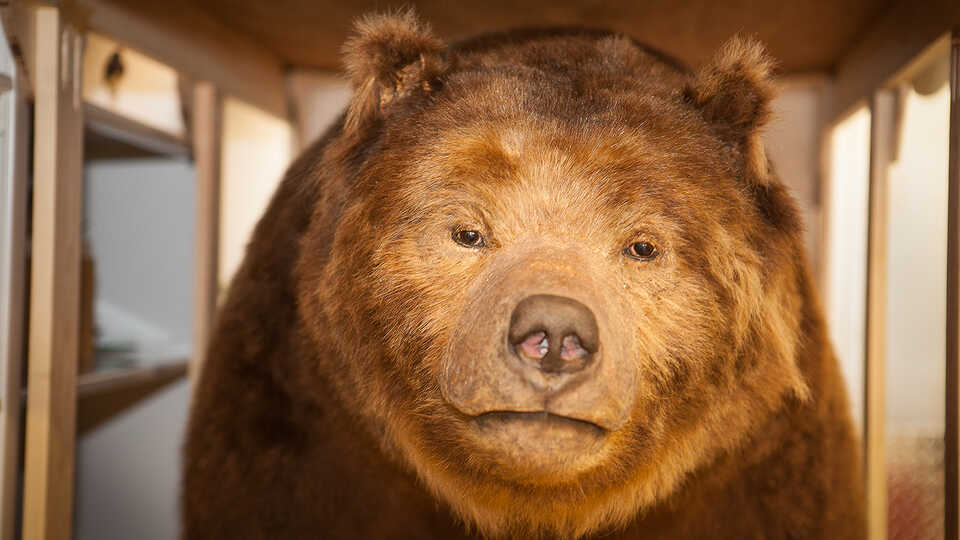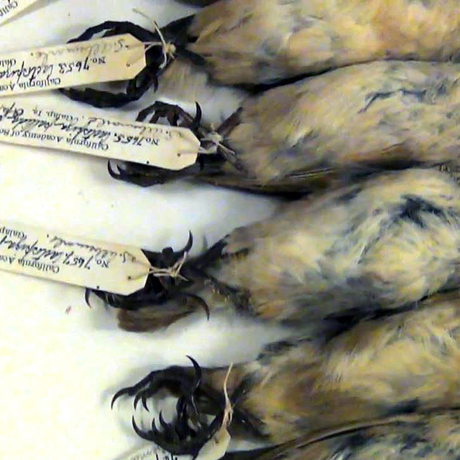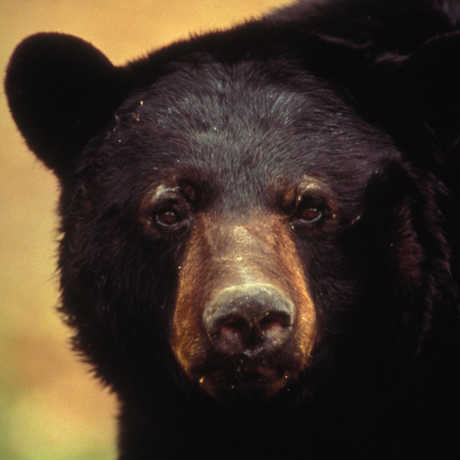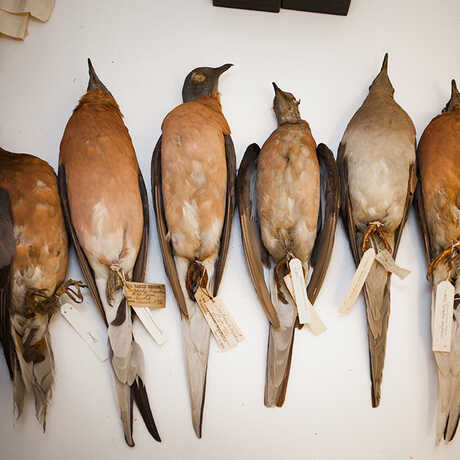Though they once ranged from Alaska all the way down to Mexico, and from California to the Great Plains, grizzlies are endangered today, found only in five small pockets in Washington, Montana, Wyoming, and Idaho, with some healthier populations existing in the wilds of Alaska and western Canada. There’s more than one kind of grizzly (genetic testing continues to refine our understanding of the group), but only an estimated 1,400 to 1,700 of the bears themselves survive in the continental United States.
Our Work
Monarch the Grizzly Bear

Monarch—a beloved piece of Academy history—was one of the last Ursus arctos californicus, a now-extinct grizzly bear subspecies. His role in California history began as an 1889 publicity stunt, when he was captured in Ventura County by order of newspaper magnate William Randolph Hearst. Named for a Hearst newspaper tagline (“Monarch of the Dailies”), the 1,100-pound bear’s life from then on was not a happy one. He spent his remaining 22 years in captivity—on display for thousands of Californians in Woodward Gardens, Golden Gate Park, and the San Francisco Zoo—while the remaining California grizzlies were being hunted to extinction.
Joseph Grinnell, director and cofounder of the University of California’s Museum of Vertebrate Zoology, was among those who saw Monarch during those years. After the bear’s death in 1911, Grinnell acquired Monarch’s remains for research and documentation, later donating the mounted specimen to the Academy. Monarch was last seen on public display from 2010 to 2012 as part of Altered State: Climate and Change—an exhibit that explored, among other things, the role humans have played in the current mass extinction.
Range and conservation status
What's in a name
While exploring the early 1800s American West, a stunned Lewis and Clark expedition described being chased, treed, and attacked by enormous bears they later referred to as “ferocious tyrants of the American woods.” Taking a cue from that reputation, scientists of the day assigned the grizzly the taxonomic label Ursus arctos horribilis, or “horrible bear.” The grizzly’s nickname, meanwhile, has less dramatic origins—it’s a nod to the “grizzled” appearance of the bear’s gray-tipped coat.
Collections overview
In addition to Monarch, the Academy’s Mammalogy collection contains 146 Ursus specimens, including six California Grizzlies, 19 Western grizzlies, and 14 Kodiak bears. Some of these specimens can be viewed online by browsing the departments Collections.
O&M collections include 135,000 bird and mammal specimens from more than 120 countries. Meet the researchers, explore projects and expeditions, and more.





![Coco de Mer By Didier Descouens (Own work) [CC-BY-SA-3.0 (http://creativecommons.org/licenses/by-sa/3.0)], via Wikimedia Commons](https://www.calacademy.org/sites/default/files/styles/manual_crop_square_460px/public/assets/images/KW_IMAGES_DO_NOT_USE/coco_de_mer_-_bot.2007.26.21.jpg?itok=-sQZ1CTN&c=0b672f4fc775307c939e67b7b954d5bd)